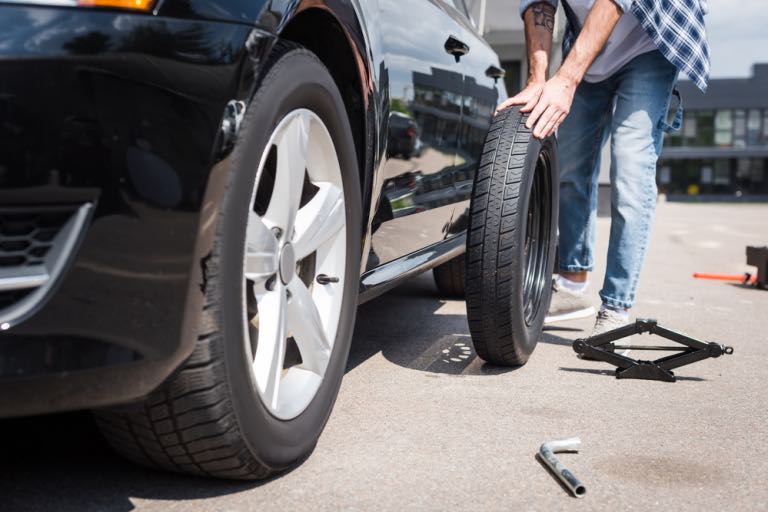

Maintaining truck tires is paramount for maximizing their lifespan and optimal performance. Proper care can translate into significant savings on repairs and replacements, ensuring smooth, safe, and efficient operations. Neglecting these crucial aspects can lead to premature wear and costly issues down the line. This article will outline key strategies for maintaining truck tires, providing actionable insights and expert tips to extend their life and boost overall performance. We will explore tire inflation, rotation, inspection, and preventive measures to avoid costly replacements, enabling you to keep your trucks on the road for longer periods. We’ll dive into specific maintenance tasks and discuss how to identify warning signs of potential trouble.
Importance of Regular Truck Tire Inspections
Comprehensive Tire Inspections for Optimal Performance
Regular truck tire inspections are essential for maintaining their integrity and ensuring safe operation. Frequent checks allow you to identify any potential issues early on, preventing more significant problems from developing. Early detection of wear and tear, damage, and irregularities can save you time and money in the long run. Timely repairs and replacements are crucial for maximizing fuel economy, road safety, and minimizing downtime. A comprehensive tire inspection usually involves examining the tire tread, sidewalls, and overall condition for any signs of damage, wear, or abnormalities. Inspect the wheel wells for debris or obstacles that may be affecting the tires’ performance. Tire pressure should be checked meticulously for accurate readings. Consistent inspections help prevent accidents and keep your trucks running smoothly. For example, a recent survey by the National Safety Council revealed that approximately 20% of truck accidents are directly related to inadequate tire maintenance and conditions.
Identifying Early Warning Signs
Recognizing early warning signs is vital for proactive maintenance. Uneven tire wear, such as a scalloped or cupped appearance, often signifies a problem with wheel alignment or tire pressure. Bulges or cuts on the sidewalls indicate damage that could compromise the tire’s integrity. Significant tread wear below the minimum legal depth is another alarming sign. Look for signs of punctures or excessive cracking, which can severely impact the tire’s structure. By promptly addressing these subtle signs, you can avoid costly repairs and replacements in the future. Remember, preventative maintenance is more cost-effective than reactive measures.
Optimal Tire Inflation for Enhanced Performance
Maintaining Proper Tire Pressure for Fuel Efficiency
Maintaining proper tire inflation pressure is crucial for maximizing fuel efficiency and extending tire lifespan. Incorrect tire pressure can lead to reduced fuel efficiency and increased tire wear. Excessive or insufficient pressure directly impacts handling, control, and overall performance. Under-inflation can lead to uneven tread wear, while over-inflation can cause reduced shock absorption and potential damage. Consult the vehicle manufacturer’s recommendations for the precise tire pressure specifications for your specific truck model. Using a reliable tire pressure gauge is essential for ensuring accurate readings. Tire pressure should be checked regularly, ideally before each trip, ensuring optimal performance.
Factors Affecting Tire Pressure
Several factors can affect tire pressure, such as temperature, load, and the type of terrain. High temperatures can increase pressure, while cold temperatures can decrease it. Carrying heavier loads requires adjusting pressure to maintain optimal performance. Different terrains may also require adjustments to the tire pressure to enhance traction and handling. Consider consulting a tire expert or the vehicle manufacturer’s guidelines for precise recommendations. Properly inflated tires help to reduce the risk of accidents, as well as ensure your fleet is running as efficiently as possible.
Importance of Regular Tire Rotation
Rotating Tires for Even Wear and Extended Lifespan
Regular tire rotation is essential to ensure even wear and increase the lifespan of your truck tires. Rotating tires helps distribute the wear across all tires, preventing uneven wear patterns. Without regular rotation, certain tires may experience more wear and tear than others, leading to premature failure. This practice is crucial to enhance the tire’s longevity and maintain consistent performance. The frequency of rotation should be determined by your truck manufacturer’s specifications or professional recommendations. It is recommended to consult the owner’s manual for the optimal rotation schedule for your specific truck model.
Benefits of Rotating Truck Tires
Proper tire rotation offers several significant advantages, including enhanced tire life, improved fuel efficiency, and better overall performance. By distributing wear more evenly, you can significantly extend the useful life of your tires. This results in lower maintenance costs and reduced downtime. Even tire wear contributes to better handling and control, enhancing safety on the road. Rotating tires also minimizes uneven wear, promoting balanced handling and better performance.
Tire Inspection Techniques for Prevention
Regular Tire Inspections to Prevent Damage
Routine inspections are essential for preventing potential damage to truck tires and ensuring safe operation. Visible damage, such as cuts or punctures, can lead to rapid degradation and premature failure. Regular inspections should include checking for any signs of damage or irregularities. Ensure the tread pattern is in good condition, that there are no cracks or cuts on the sidewalls, and that the tire pressure is accurate. Check the overall physical condition of the tire for any signs of unusual wear. Regular inspections allow for timely intervention, preventing minor problems from escalating into major issues.
Identifying potential problems
Thorough inspections help you identify potential issues like uneven tread wear, bulges or cracks on the sidewalls, and irregular wear patterns. By addressing these problems early on, you can save significant money and ensure the continued safety of your trucks. Pay special attention to the condition of the tire belts and the overall structure of the tire for any abnormalities. Consistent tire inspections help minimize the risks of accidents and ensure your fleet is running as efficiently as possible. Consulting a professional tire specialist for inspections is highly recommended, especially for complex issues.
Choosing the Right Tires for Your Trucks
Selecting the Right Tire Type for Your Truck’s Needs
Selecting the correct tires for your truck is essential for optimal performance and longevity. Different truck types and operating conditions may require specific tire types. Factors like load capacity, speed ratings, and the terrain you will be traversing play a crucial role in determining the suitable tire choice. Consulting with a tire dealer or manufacturer to get advice specific to your vehicle is highly recommended. Choosing the right tires significantly influences fuel efficiency and vehicle handling, as well as safety.
Factors to Consider When Choosing Truck Tires
Consider several critical factors when choosing truck tires. The terrain and operating conditions should be taken into account, such as weather patterns, road conditions, and potential obstacles. Think about the frequency of use and typical loads to choose a tire that can handle the stress placed on it. Factors like tread design, sidewall strength, and material composition all play a role in determining the tire’s performance and longevity.
Frequently Asked Questions
How often should I rotate my truck tires?
Truck tire rotation is essential for even wear. The frequency of rotation depends on several factors, including the type of truck, driving conditions, and the specific recommendations from the manufacturer. Consult your owner’s manual or a qualified mechanic for the optimal rotation schedule for your specific truck model. Generally, rotation should be performed every 5,000-10,000 miles, or according to manufacturer guidelines, whichever comes sooner.
What are the signs that my truck tires need replacing?
Several visible signs indicate that your truck tires need replacement. Look for uneven wear patterns, bulges, cuts, or significant damage to the tire sidewalls. Loss of tread depth is also a key indicator. Consult your owner’s manual for the minimum legal tread depth requirements in your area and always err on the side of caution; damaged or worn-out tires compromise safety and handling and should be replaced immediately. Don’t hesitate to schedule a professional inspection if you are unsure about the condition of your tires.
What is the impact of tire pressure on truck performance?
Maintaining the correct tire pressure is critical to the performance and lifespan of your truck tires. Under-inflated tires lead to increased wear and tear, reduce fuel efficiency, and compromise handling. Over-inflated tires can cause uneven wear and reduce the tire’s ability to absorb shocks, potentially leading to punctures or other damage. Ensure you check and adjust tire pressure regularly to the values specified by the manufacturer for optimal safety and fuel economy.
In conclusion, maintaining truck tires is crucial for extended life and optimal performance. By following these simple yet effective tips, you can significantly reduce the risk of premature tire wear, prevent costly repairs, and enhance the overall safety and efficiency of your fleet. Prioritize regular inspections, proper inflation, and adherence to recommended maintenance schedules. Schedule a professional tire inspection today to ensure your trucks are road-ready and safe for the journey ahead.